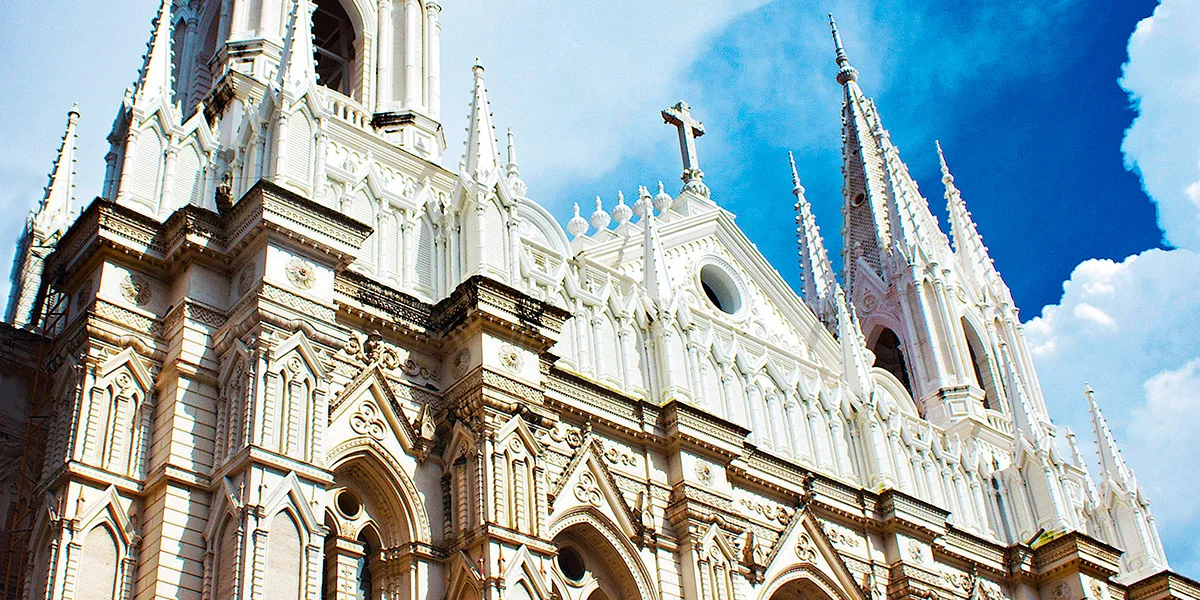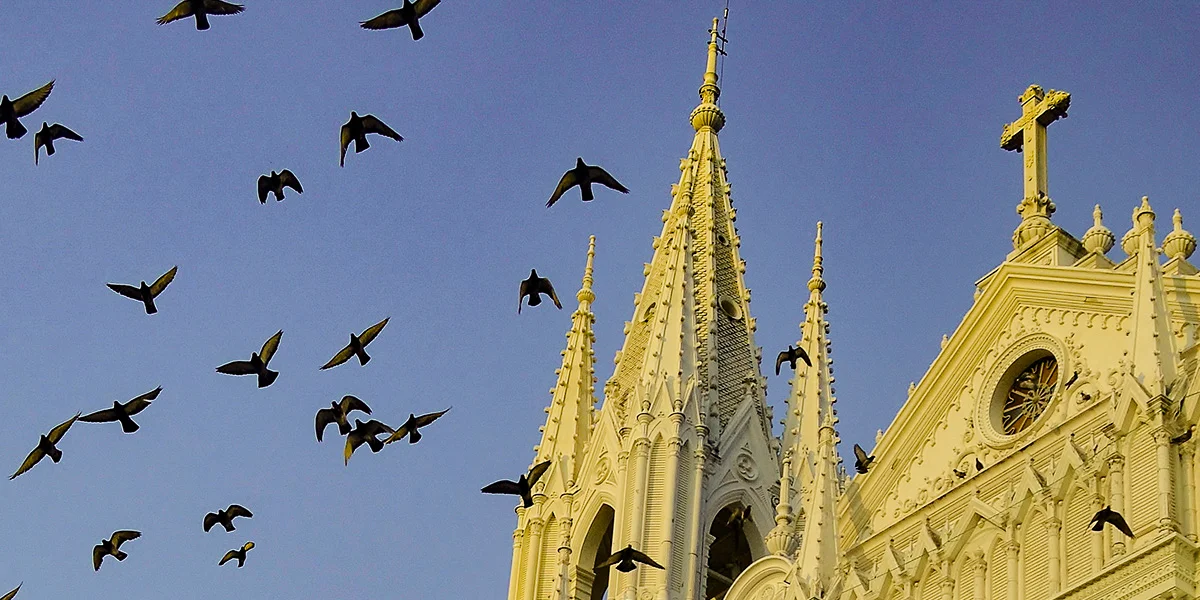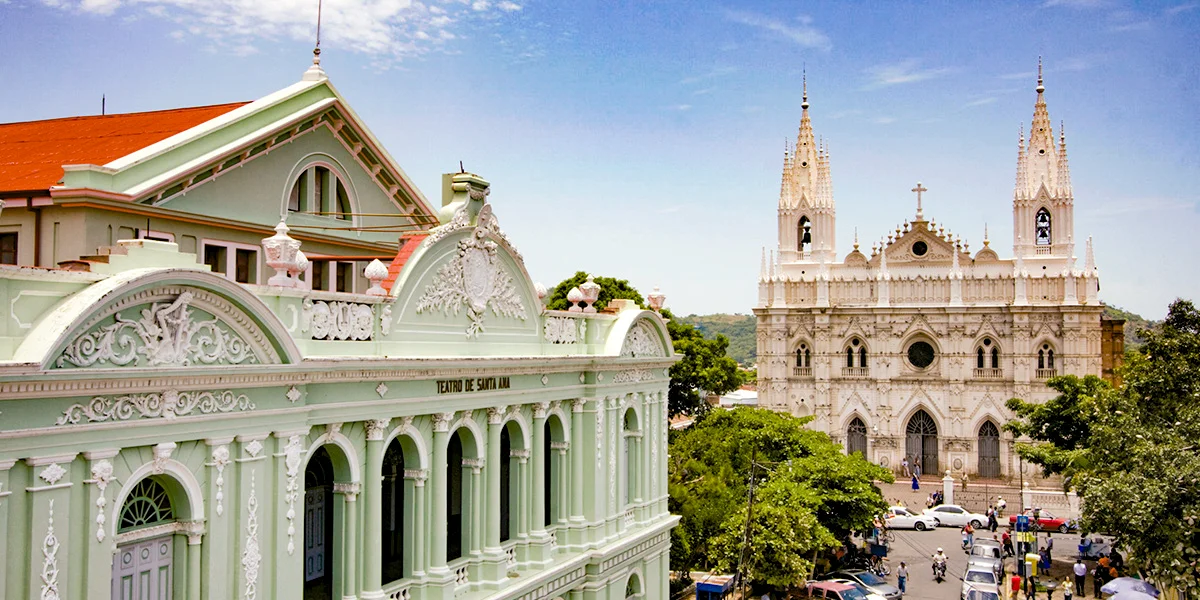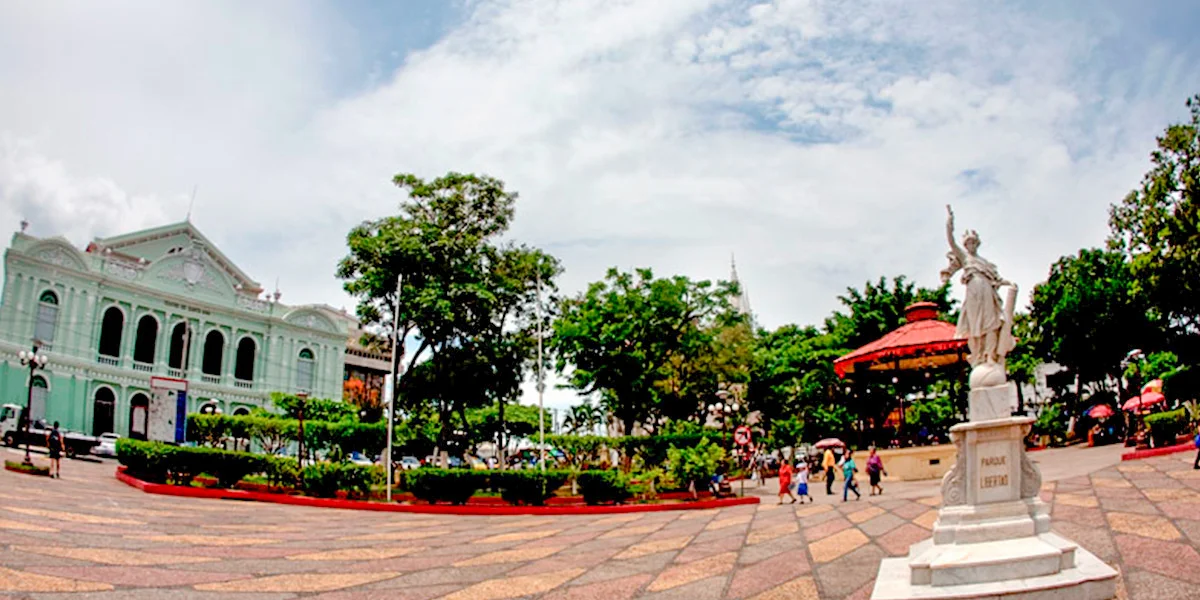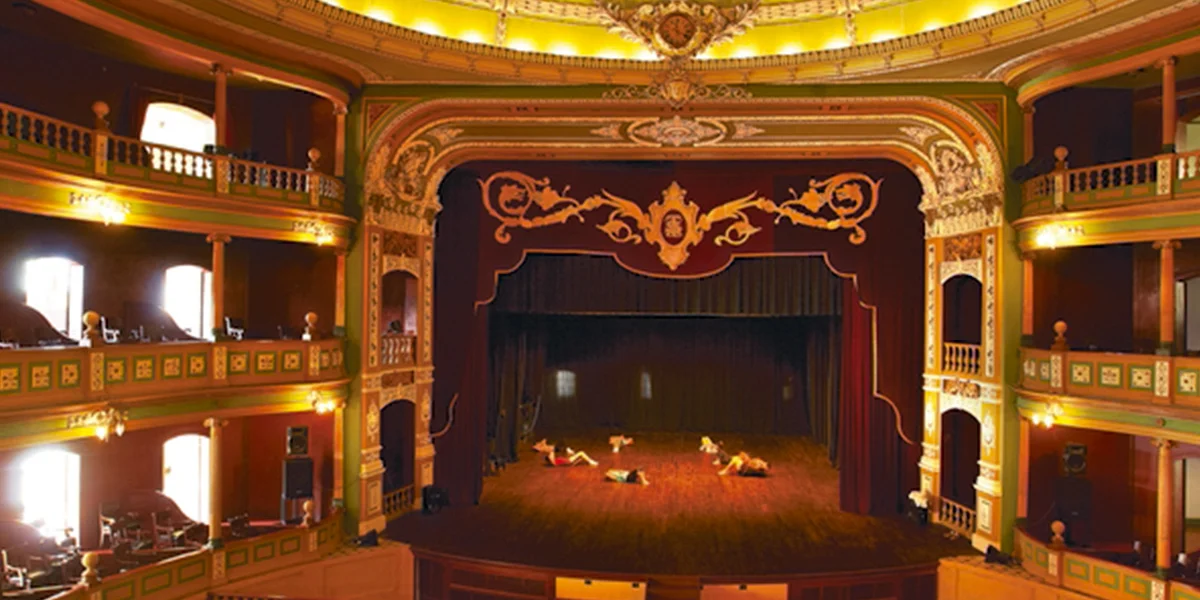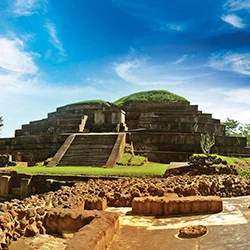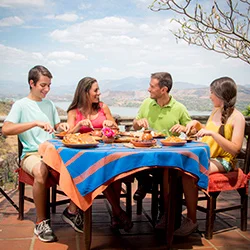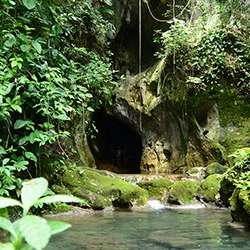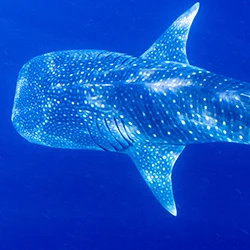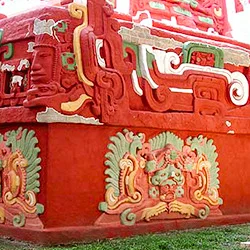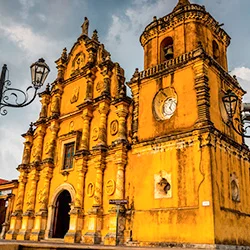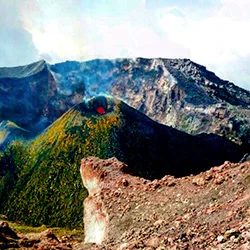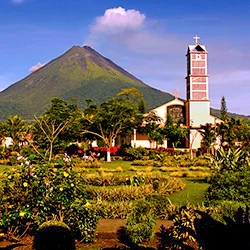Santa Ana
THE SECOND CITY OF THE REPUBLIC FOR ITS LOCATION, BEAUTIFICATION AND ECONOMy
In the historic center of the city of Santa Ana is one of the most important architectural infrastructures of gothic style in El Salvador, built between 1906-1913.
It is the second city of the Republic for its location, beautification, and economy. The city is located on a plateau 665 meters high, and 65 kilometers from San Salvador, connected by a highway. The average temperature is 25° C. The local name of the city is Cihuatehuacán, which in Náhuatl means “The City of the Pythonesses”. Santa Ana has factories of agricultural tools, free zones, and also very modern shopping centers and an excellent infrastructure for tourist services. The main agricultural products in the area are coffee, basic grains, sugar cane and flowers, among others, as well as various types of livestock.
The historical, cultural and archaeological wealth of Santa Ana make it a very attractive destination. The archaeological sites of Tazumal, Casablanca, Trapiche and others to be dug are located in this western department. Additionally, the city offers a diversity of historical sites and cultural activities, such as:
The Cathedral of Santa Ana, declared Cultural Heritage of El Salvador in 1995. The structure is 90 meters long, and has a Gothic and Byzantine style.
The Historical Complex, comprised by The Palace of the City Council, seat of the municipal government; the National Theater, one of the most beautiful and with the best acoustics and decoration of the country, considered a true architectural jewel, built in the first decade of the 20th century and inaugurated in 1910 with an opera by Giuseppe Verdi; and, the Regiment or Barracks of Santa Ana, impregnable bastion, taken by a stroke of boldness by 44 revolutionaries in 1894.
The patron saint festivities are celebrated in honor of Our Lady Santa Ana during the “Julias Festivities” from July 1st to 26th of each year.
GEOPOSITION
Playa Las Flores
Actun Tunichil Muknal, ATM CAVE
Gladden Spit and Silk Cays Marine Reserve
RECOMMENDED TOURS
Mesoamerican highlights
Discover the heritage of the colonial cities, the National Parks, and the pre-Columbian ruins of Copán in Nicaragua, Honduras, and Guatemala.
Central America Highlights
Discover nature, colonial cities, the Mayan legacy, and the way of life in Guatemala, Honduras, El Salvador and Nicaragua.
Must see Guatemala & Belize
Cultural visits, discovering the ancient Maya heritage, and snorkeling are just some of the adventures offered by this amazing tour.
From Mayan Cities to World Class Snorkeling
Mayan ruins, nature, and the most beautiful beaches surround you in this tour through Guatemala and Belize.
Authentic Costa Rica and Nicaragua
Visit volcanoes, discover the culture, and enjoy the beaches. A truly wonderful experience.
